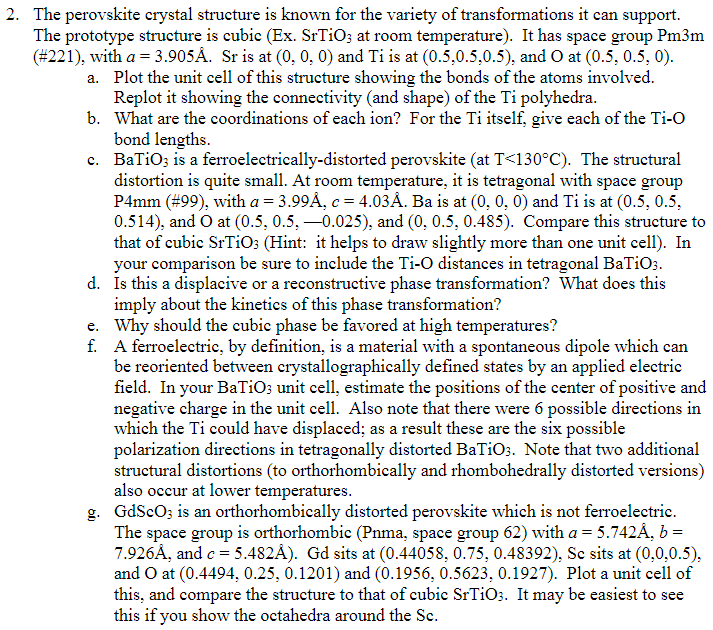Answered step by step
Verified Expert Solution
Question
1 Approved Answer
The perovskite crystal structure is known for the variety of transformations it can support. The prototype structure is cubic ( E x . S r
The perovskite crystal structure is known for the variety of transformations it can support.
The prototype structure is cubic at room temperature It has space group
# with Sr is at and is at and at
a Plot the unit cell of this structure showing the bonds of the atoms involved.
Replot it showing the connectivity and shape of the Ti polyhedra.
b What are the coordinations of each ion? For the Ti itself, give each of the TiO
bond lengths.
c is a ferroelectricallydistorted perovskite at The structural
distortion is quite small. At room temperature, it is tetragonal with space group
# with Ba is at and is at
and at and Compare this structure to
that of cubic Hint: it helps to draw slightly more than one unit cell In
your comparison be sure to include the TiO distances in tetragonal
d Is this a displacive or a reconstructive phase transformation? What does this
imply about the kinetics of this phase transformation?
e Why should the cubic phase be favored at high temperatures?
f A ferroelectric, by definition, is a material with a spontaneous dipole which can
be reoriented between crystallographically defined states by an applied electric
field. In your unit cell, estimate the positions of the center of positive and
negative charge in the unit cell. Also note that there were possible directions in
which the Ti could have displaced; as a result these are the six possible
polarization directions in tetragonally distorted Note that two additional
structural distortions to orthorhombically and rhombohedrally distorted versions
also occur at lower temperatures.
g is an orthorhombically distorted perovskite which is not ferroelectric.
The space group is orthorhombic Pnma space group with
and Gd sits at Sc sits at
and at and Plot a unit cell of
this, and compare the structure to that of cubic It may be easiest to see
this if you show the octahedra around the Sc

Step by Step Solution
There are 3 Steps involved in it
Step: 1

Get Instant Access to Expert-Tailored Solutions
See step-by-step solutions with expert insights and AI powered tools for academic success
Step: 2

Step: 3

Ace Your Homework with AI
Get the answers you need in no time with our AI-driven, step-by-step assistance
Get Started


